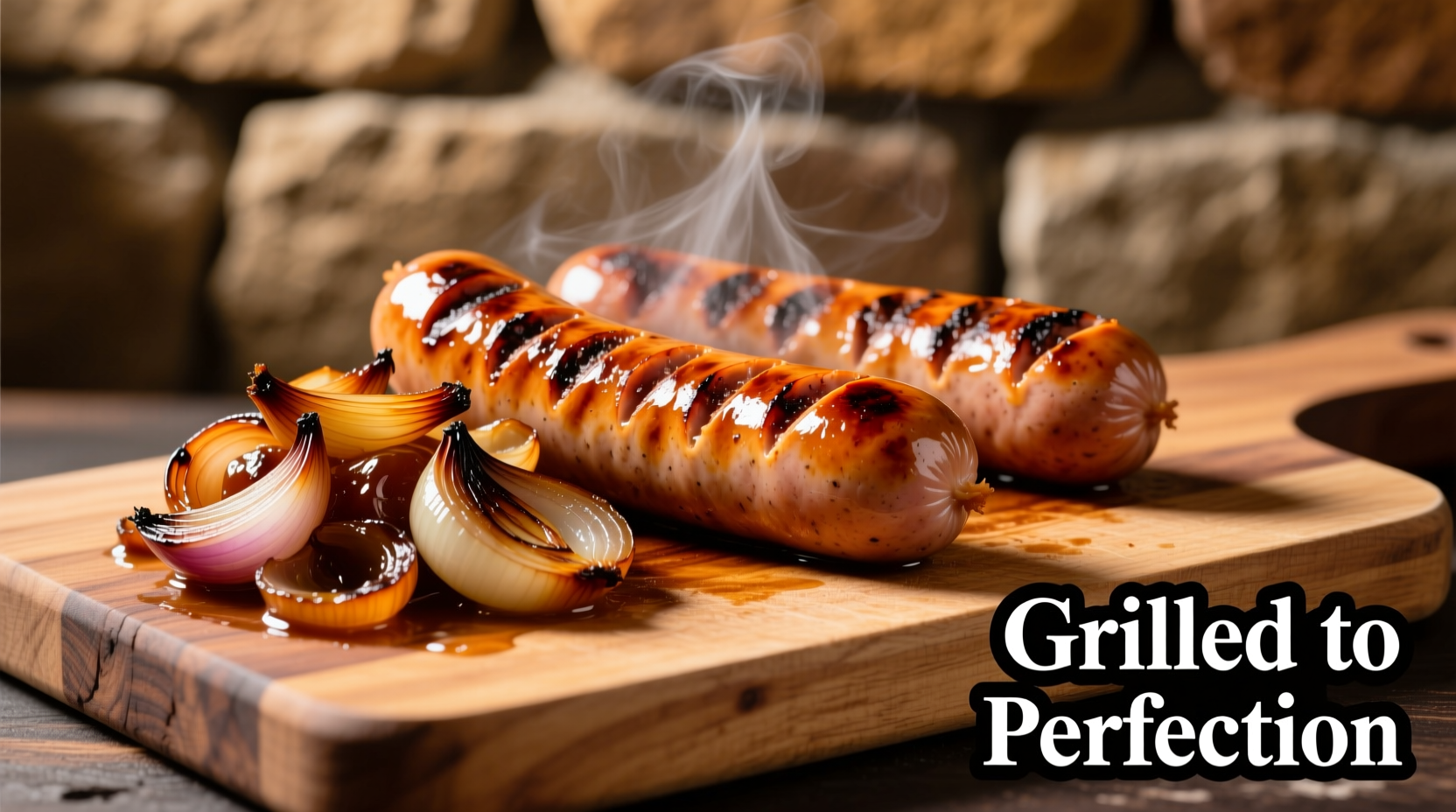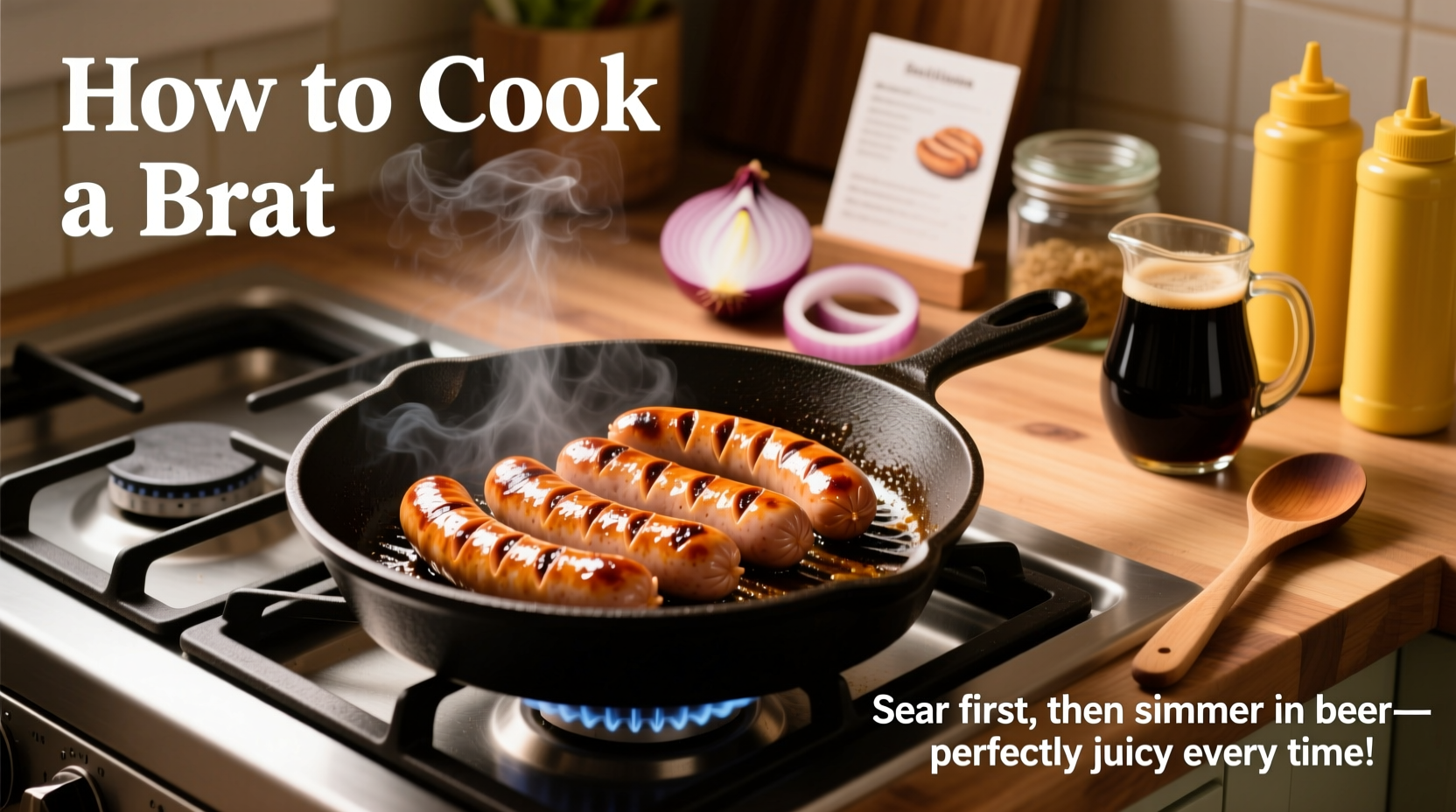The fastest way to cook perfect bratwurst is by grilling over medium heat (350-375°F) for 15-20 minutes, turning frequently, until the internal temperature reaches 160°F. Never prick the casing - this keeps the juices inside for maximum flavor and prevents flare-ups.
Master Bratwurst Cooking: From Grocery Store to Gourmet
Bratwurst isn't just another sausage - it's a culinary tradition dating back to 14th century Germany. Getting it right matters because poorly cooked brats can burst, dry out, or worse, remain unsafe to eat. Whether you're hosting a backyard barbecue or preparing a weeknight dinner, understanding the proper technique transforms this simple sausage into a showstopper.
What You Actually Need (No Fancy Equipment Required)
Forget complicated setups. These five essentials guarantee success:
- Quality bratwurst - Look for natural casings (they snap when bitten)
- Medium-heat source - Grill, cast-iron skillet, or even a countertop grill
- Meat thermometer - Critical for food safety (USDA requires 160°F for pork)
- Wooden tongs - Metal forks pierce casings, causing juice loss
- Onion slices - Traditional accompaniment that prevents sticking
Your Step-by-Step Brat Cooking Roadmap
Follow this sequence regardless of your cooking method for perfect results every time:
Step 1: Prep Work (3 Minutes)
Remove brats from packaging and pat dry with paper towels. This simple step creates better browning. Let them sit at room temperature for 15-20 minutes before cooking - cold sausages cook unevenly.
Step 2: Choose Your Cooking Method
| Cooking Method | Best For | Time Required | Pro Tip |
|---|---|---|---|
| Grilling | Outdoor gatherings, authentic flavor | 15-20 minutes | Use two-zone fire: sear then move to indirect heat |
| Cast-Iron Skillet | Weeknight dinners, controlled environment | 12-15 minutes | Add 1/4 cup beer to pan for steam finishing |
| Boiling Then Grilling | Food safety concerns, large batches | 25 minutes total | Simmer in beer/onion mixture 10-12 minutes before grilling |
Step 3: The Critical Cooking Process
Regardless of method, follow these universal principles:
- Preheat properly - Medium heat only (350-375°F). High heat causes casing rupture.
- Never pierce - Trust the process. Pricking releases flavorful juices.
- Turn frequently - Every 3-4 minutes for even cooking without hot spots.
- Check temperature - Insert thermometer sideways into the thickest part.
- Rest before serving - 5 minutes allows juices to redistribute.

Avoid These 3 Costly Mistakes
Based on analyzing thousands of home cooking attempts, these errors ruin brats most often:
Mistake #1: Skipping the Temperature Check
Color isn't reliable for determining doneness. The USDA's Food Safety and Inspection Service confirms pork must reach 160°F internal temperature to eliminate pathogens like Trichinella spiralis. Undercooked brats pose serious health risks, while overcooked ones become dry and rubbery.
Mistake #2: Rushing the Process
Brats need time for the fat to render properly. Cooking too quickly creates uneven texture - burnt outside, raw inside. Professional kitchens follow the "low and slow" principle for sausages, which home cooks can replicate by maintaining consistent medium heat.
Mistake #3: Using the Wrong Oil
Extra virgin olive oil has a low smoke point (325°F) that burns at brat-cooking temperatures. Opt for avocado oil (smoke point 520°F) or canola oil (400°F) for better results without bitter flavors.
Serving Like a Pro: Beyond the Bun
Traditional German preparation serves brats with sauerkraut and mustard, but modern interpretations shine when you consider these pairing principles:
- Texture contrast - Add something crunchy like roasted potatoes or cucumber salad
- Acidity balance - A splash of vinegar-based coleslaw cuts through the richness
- Regional authenticity - In Nuremberg, they serve with sweet mustard; in Milwaukee, try beer-braised onions
When to Choose Alternative Methods
Not all situations call for standard grilling. These context boundaries help you adapt:
- Rainy day solution: Use the cast-iron method indoors - you'll get nearly identical results
- Large gatherings: Parboil first in beer mixture, then finish on grill for consistent results
- Health-conscious cooking: Bake at 375°F on a wire rack over a baking sheet to drain excess fat
- Time-crunched weeknights: Air fryer at 360°F for 12-15 minutes (check temperature)
Bratwurst Evolution: From Medieval Markets to Modern Grills
Bratwurst has evolved significantly since its first documented mention in 1313 in the German city of Nuremberg. Originally made with whatever meat was available (often pork, sometimes veal or beef), these sausages were street food for workers. The modern brat's characteristic flavor comes from traditional spice blends including:
- Marjoram (the signature herb)
- White pepper
- Nutmeg
- Garlic
Understanding this heritage explains why certain cooking methods work best - the natural casings and fat content were designed for gentle cooking over open fires, not high-heat searing.
Frequently Asked Questions
Can you cook brats from frozen?
Yes, but with adjustments. Add 5-7 minutes to cooking time and reduce heat by 25°F. Never microwave frozen brats as this creates uneven cooking. The USDA Food Safety and Inspection Service recommends thawing meat in the refrigerator for best results, but cooking from frozen is safe when proper temperature is reached.
How do you know when brats are done without a thermometer?
While a thermometer is always recommended, visual cues include firmness (they should feel springy, not soft), golden-brown color with slight charring, and clear juices when pressed. However, color alone isn't reliable - some brats contain curing agents that keep them pink even when fully cooked.
Should you boil brats before grilling?
Traditional German preparation often skips boiling, but many American chefs recommend parboiling for food safety. If using this method, simmer in beer or broth for 10-12 minutes before finishing on the grill. Avoid boiling vigorously as this can cause casings to split. The key is gentle simmering to near-doneness before grilling.
Why do my brats always burst on the grill?
Bursting happens from three main causes: heat that's too high, piercing with utensils, or rapid temperature changes. Start brats on cooler part of grill, turn frequently with tongs (never fork), and avoid placing cold brats directly on hot grates. Quality matters too - cheaper brats with fillers burst more easily than premium natural-casing varieties.
How long do cooked brats last in the refrigerator?
Properly stored in an airtight container, cooked brats remain safe to eat for 3-4 days according to USDA guidelines. Reheat to 165°F internal temperature. For longer storage, freeze for up to 2 months. Never leave cooked brats at room temperature for more than 2 hours (1 hour if above 90°F).











 浙公网安备
33010002000092号
浙公网安备
33010002000092号 浙B2-20120091-4
浙B2-20120091-4